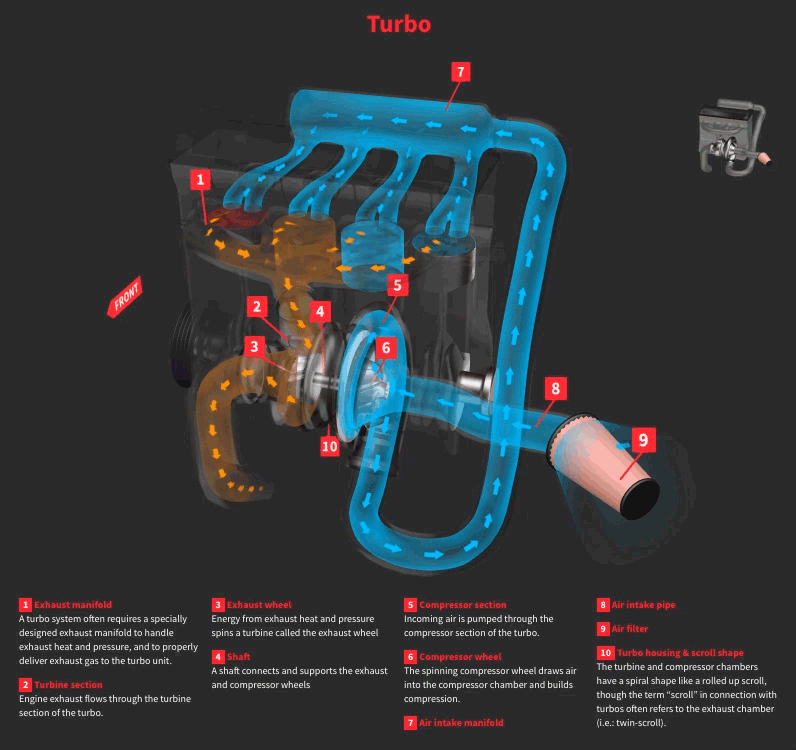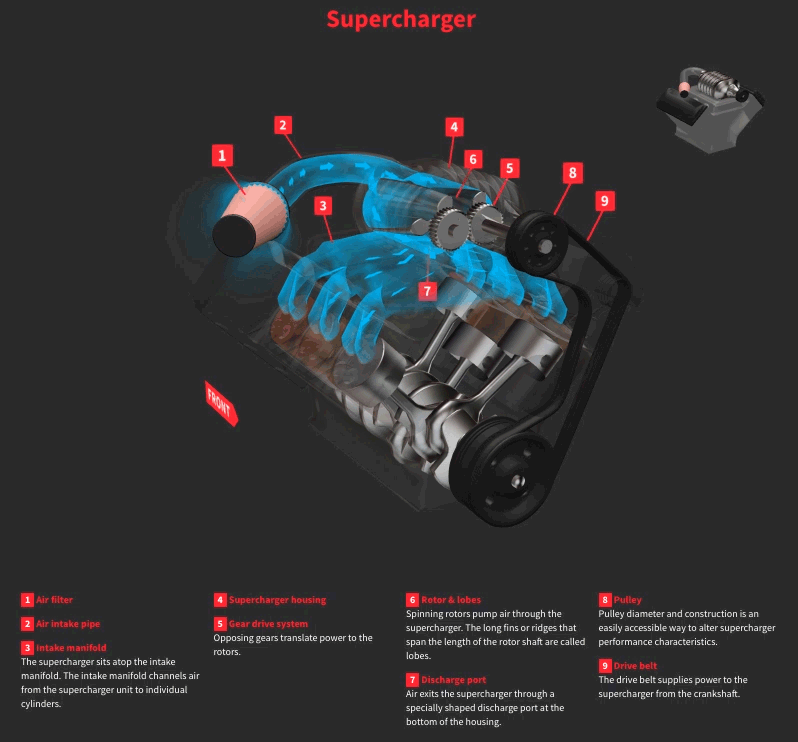Forced induction has become a familiar theme among competitors in all types of motorsports and drag racing, especially in half-mile events. What do we mean by forced induction? The phrase “forced induction” refers to the process of turbocharging or supercharging an engine in order to increase horsepower as highlighted by Engineering Explained video above!
This often results in better performance as well as efficiency. It also provides for an almost endless level of power and upgradability depending on what the motor can withstand. Now, between turbocharging and supercharging, what makes for a better modification for half-mile racing? Let’s examine more closely.
A turbocharger uses the flow of exhaust gases, that would otherwise be unused, to spin a turbine which effectively powers a compressor, to force more air into the engine. More airflow = more power. See turbocharge animation below by Tyroola

A supercharger, on the other hand, does not rely on exhaust gases, but actually relies on the engine itself to operate. Superchargers are either belt driven or gear driven to operate a compressor and supply more air into the engine.
There are also different styles of superchargers, with roots-style superchargers sitting atop the motor and replacing the intake manifold, versus a centrifugal-type supercharger which acts almost like a belt-driven turbocharger. See turbocharge animation below by Tyroola

With the use of turbochargers, a common characteristic is “turbo lag”, or the delay as a result of the time it takes for gases to spool up the turbo creating that boost of power. The larger the turbocharger, generally the longer it will take to spool up, and effectively the worse the turbo lag will be. A supercharger, on the other hand, being belt driven, generally has almost no lag, resulting in immediate torque.
With the added efficiency automakers have found by using turbochargers, they can decrease engine sizes and still maintain, or often times increase, the performance over a previous model. Due to efficiency and emissions, turbochargers have become a more common theme among modern performance vehicles, but there are still many vehicles utilizing factory superchargers.
Those who are fans of muscle cars will see superchargers in platforms like Dodge Hellcats, the Corvette ZR1, and Mustang GT500. Simply for the benefit of power and torque, these beasts utilize forced induction for a dramatic increase in performance and speed. However, it can be argued that they lack the efficiency that many turbocharged vehicles are operating with.
MUST READ: 800+hp twin turbo Chevy C8 Z06 Corvette may be coming
Now, this brings us to the important question: which application performs best in half -mile racing? As we have mentioned in other articles, power and traction are key in the formula of the perfect half-mile pass. Although superchargers offer instant torque, sometimes that can work against traction by surging such a massive influence of power and torque, whereas turbocharged vehicles often have more control over ramping in, and building up, the boost gradually.
The fastest half mile cars in the world are generally turbocharged, as can be seen by world records in AWD, FWD, RWD, and factory platforms all being set by turbocharged vehicles.
For the sake of racing and the highest trap speeds, turbocharging has proved to be quite dominant with anything over 1500 horsepower. While superchargers are still a viable performance option and allow factory cars to reach supercar speeds, in order to be among top competitors in the half-mile, the use of turbos tends to be the clear route to success.
